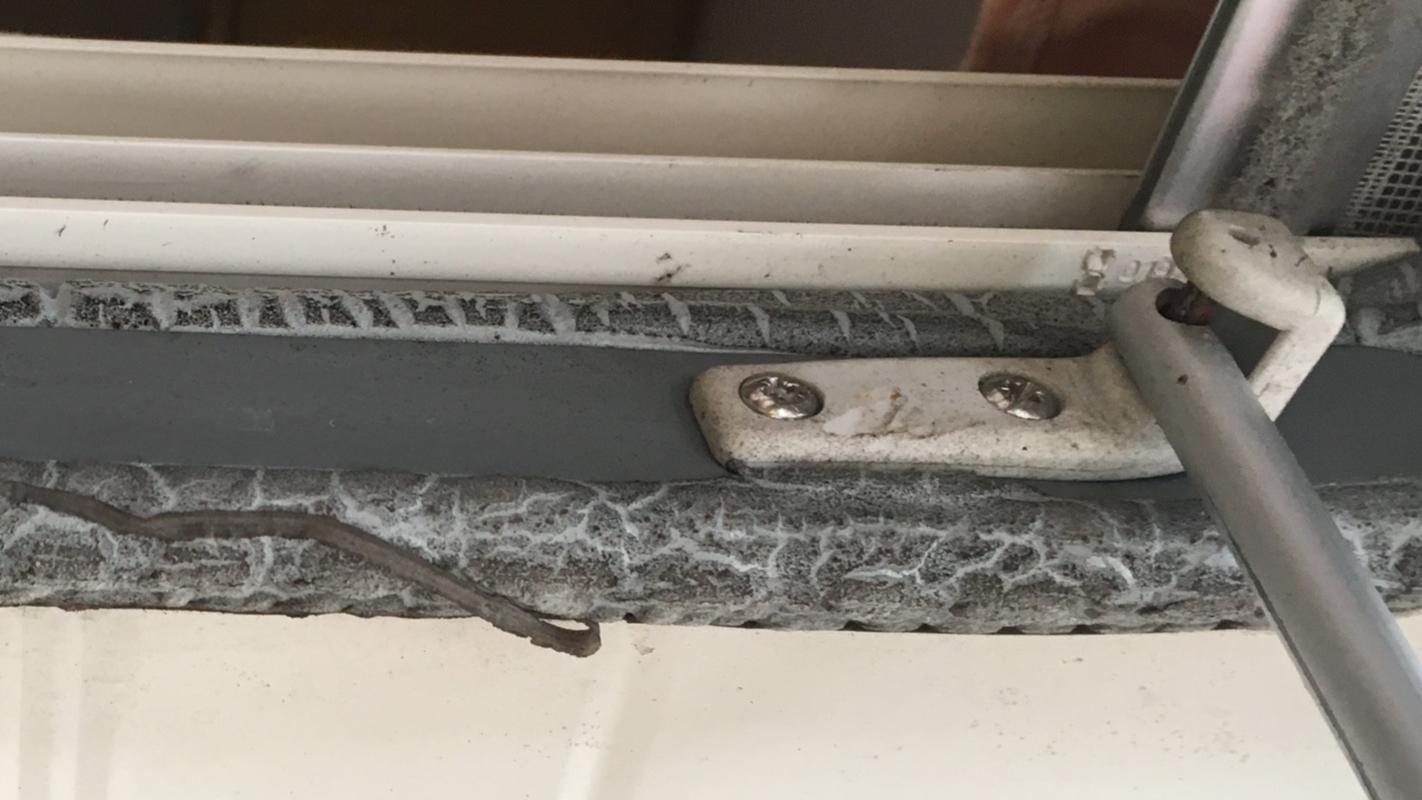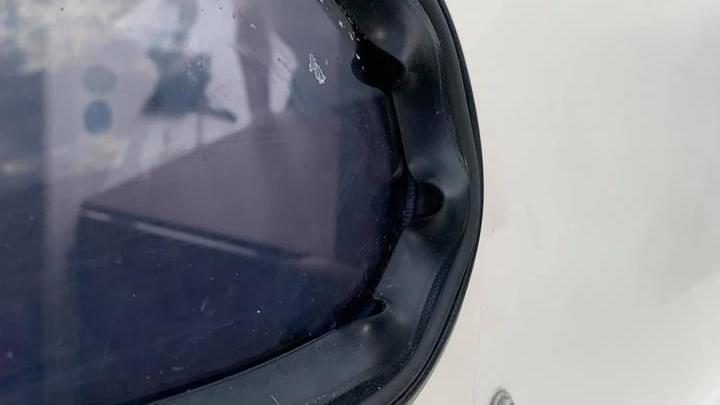Window seals are essential for weatherproofing your windows to ensure your home stays warm, comfortable and free from draughts. Although most uPVC glazing gaskets are durable and long-lasting, they can deteriorate through age, weathering and general wear and tear. Replacing the seals around your window will resolve this issue, but understanding why seals fail will help you maintain and prolong the life of your existing gaskets.
6 Common Causes of uPVC Window Seal Failures
There are a several factors that may contribute to the failure of your glazing gaskets. These include;
Thermal Expansion and Contraction
uPVC window frames, like all materials, expand and contract with temperature changes. Manufactured from different materials, your windows, frames and other fittings expand and contract at different rates. Over time this can lead to the deterioration of your seals and sealant which are constantly adjusting to different gap sizes.
The repeated cycles of expansion and contraction can lead to small cracks or gaps in your window seals. These imperfections may start small but can grow with continued thermal cycling reducing the effectiveness of the seal in preventing air and moisture from entering your home. This process can be more pronounced in climates with significant temperature fluctuations.
UV Radiation
Exposure to UV can degrade uPVC window seals manufactured from rubber materials through a process known as photodegradation. Prolonged exposure may make your glazing gasket brittle, losing its flexibility and effectiveness. This loss of flexibility makes rubber less able to accommodate the natural expansion and contraction of the window frame, making it more susceptible to cracking.
UV can also cause white window seals to discolour and become a yellow-ish or brown-ish. This is mostly a cosmetic issue by can be indicative of deeper structural damage within the material.
Aging of Materials
Although external factors like weathering and physical damage may cause your seal to deteriorate, most window gaskets fail due to the natural aging of the rubber material. With age, the materials used in uPVC window seals can lose their elasticity and resilience. This aging process is often due to the loss of plasticisers in the rubber compound, leading to brittleness and cracking.
Oxidation is a chemical process that occurs when the material is exposed to oxygen over time. This can lead to changes in the chemical structure of uPVC, resulting in a weakening of the material and a reduction in its performance. As these sections experience constant exposure to oxygen, it is not possible to stop or slow down this natural aging process.

Moisture and Humidity
Moisture and humidity can cause significant damage to uPVC window seals. Constant exposure to moisture, especially in areas with high humidity or frequent rain, will accelerate chemical reactions within the rubber impacting its functionality and longevity. Moisture will also create an environment for mold and mildew to grow which will degrade the material, causing it to break down more quickly.
In colder climates, moisture that has penetrated small cracks or gaps in the seal can freeze and expand, causing the cracks to widen. This freeze-thaw cycle can quickly turn minor damage into significant structural issues with the seal.
Improper Installation
If the window seals are not properly installed, they can fail prematurely. Incorrect installation can lead to undue stress on certain parts of the seal, causing it to wear out more quickly. If the frame is not correctly aligned or if the seal is not properly fitted, you may experience gaps or areas where the seal is not in full contact with the surface. This incomplete seal can allow air and water to penetrate, reducing the insulating properties of the window and potentially leading to water damage
uPVC window seals can also be damaged during the installation process using sharp tools, excessive force or careless handling. This can tear, puncture or otherwise compromise the integrity of the seal.

Physical Damage
Everyday use and accidental bumps or knocks will cause physical damage to window seals. Regular operation of the windows, especially if not done carefully, can stretch, tear or displace the seals. This is quite common with bubble gaskets which are too large for the gap they are trying to seal. Excessively large sections may experience compression set within prolonged and excessive compression by the window against the frame.
Sharp options and activities such as jet washing can puncture the seal, creating a pathway for air and moisture to penetrate.
Preventing Damage to uPVC Window Seals
Preventing damage to uPVC window seals involves a combination of proper installation, regular maintenance and mindful usage. To protect the life of your glazing gasket, we recommend you follow these key strategies;
- Professional Installation: Ensure that your
uPVC windows are installed by skilled professionals. Proper installation is crucial
to prevent issues like misalignment or improper sealant application that can
lead to early damage.
- Regular Inspection and Maintenance:
Periodically inspect your window seals for signs of wear, cracking or
discoloration. Addressing minor issues early can prevent them from turning into
major problems. Clean the seals gently with a soft cloth and mild cleaning
solution to remove dirt and debris.
- Use Appropriate Cleaning Agents: Avoid harsh
chemicals or abrasive cleaners that can degrade the seal material. Stick to
mild detergents, such as diluted washing up liquid, and ensure that any
cleaning agents used are safe for uPVC.
- Protect from UV Radiation: Although it's
challenging to completely avoid UV exposure, using window treatments like
blinds or curtains can help reduce the amount of direct sunlight hitting the
seals, thereby slowing down UV-induced degradation.
- Mindful Operation: Be careful not to cause
mechanical damage to the seals when opening and closing windows. Avoid using
sharp objects or excessive force near the window seals.
- Manage Humidity Levels: High humidity may
increase the chance of issues like mold growth on your glazing gaskets. Use
dehumidifiers or ensure adequate ventilation in areas with high moisture levels
to keep humidity in check.
- Prompt Repairs: If you notice any issues with the seals on your window, such as gaps or detachment, address them promptly. Sometimes a simple reapplication of sealant can fix minor issues, but in some cases, the seal may need to be replaced.
Replacing Damaged uPVC Window Seals
Despite careful regular maintenance, it may still be necessary to replace your damaged uPVC glazing gaskets to ensure a draught-free and comfortable living environment. This will ensure that your windows continue to perform effectively in terms of insulation and preventing moisture ingress.Top of Form
Window gaskets are available in several different shapes and sizes. Selecting the correct profile is essential for ensuring a long-lasting sealing solution that protects your home and saves you money on your heating bills. For support in choosing the correct replacement section, please contact our helpful and knowledgeable team.
Please visit our Glazing, Door and Window Seal category to see our extensive range of glazing gaskets.